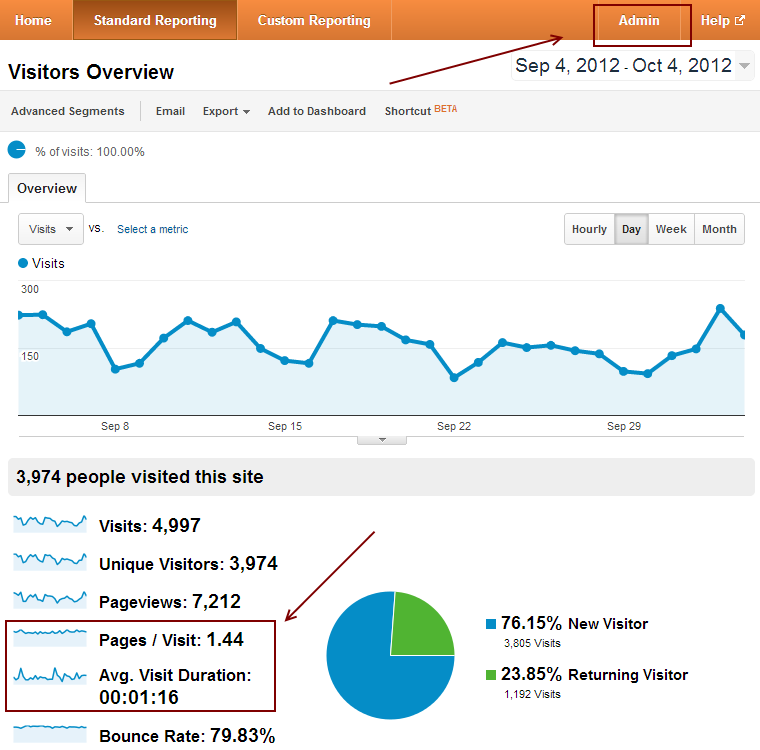Introducing the Blind Attractions: Recognizing What Google Analytics Goals Can not Gauge
In the realm of digital analytics, Google Analytics stands as a powerful tool for tracking and examining on-line user communications. Recognizing what Google Analytics objectives can not measure is important for gaining a comprehensive sight of user habits and involvement.
Individual Behavior on External Operatings Systems
Understanding how individuals connect on external platforms is crucial for enhancing online strategies. External systems, such as social networks networks, reference web sites, and on-line forums, play a substantial duty in driving website traffic to a firm's site. By evaluating customer habits on these platforms, companies can acquire beneficial insights into the efficiency of their marketing initiatives and the preferences of their target market.
One key facet of customer habits on outside systems is the recommendation source. By tracking where the individuals are coming from, services can identify which platforms are driving one of the most traffic to their web site. This information can assist firms allot their sources better, concentrating on the systems that yield the ideal outcomes.

Offline Conversions and Communications
Analyzing customer actions on outside systems offers important insights into on-line techniques; nonetheless, considering offline conversions and communications is equally vital for an extensive understanding of a business's overall performance. Offline conversions, such as in-store acquisitions or phone queries, play a considerable function in many organizations' success.

Attribution Beyond Last Click
When diving into the realm of digital advertising analytics, it ends up being vital to look beyond the solitary touchpoint of the last click for a more extensive understanding of acknowledgment. While Google Analytics supplies important understandings right into customer actions, relying solely on last-click acknowledgment can be limiting - what data is google analytics goals unable to track. Attribution designs that surpass the last click provide a much more nuanced view of the customer journey, taking into consideration all the touchpoints that cause a conversion
Acknowledgment beyond the last click enables marketing experts to appoint credit score to numerous interactions directory along the conversion path, offering a clearer photo of the effectiveness of different marketing networks. By checking out multi-touch acknowledgment versions such as straight, time degeneration, or position-based acknowledgment, businesses can better assign their marketing budgets and maximize their strategies for optimal effect.
Recognizing the influence of each touchpoint in the conversion procedure is vital for making informed choices and making the most of ROI. By embracing attribution beyond the last click, businesses can get deeper understandings right into client habits and customize their marketing initiatives much more properly.
Cross-Device and Cross-Browser Monitoring

Similarly, cross-browser look at here monitoring complements cross-device monitoring by capturing individual habits as they switch between different web browsers. Recognizing exactly how users communicate with web sites on various internet browsers can aid marketers maximize their on-line experiences to ensure uniformity and functionality across various systems.
Qualitative Data and Individual Intent
Recognizing customer intent via qualitative data analysis is essential for establishing targeted electronic advertising and marketing techniques that resonate with the needs and preferences of the target market. Qualitative information offers insights into the 'why' behind user actions, dropping light on motivations, feelings, and choices that quantitative data alone can not capture. By analyzing user feedback, remarks, and communications, marketers can reveal beneficial information concerning customer intent, permitting them to tailor their messaging, web content, and offerings to better straighten with what their target market is looking for.
Qualitative data also helps in recognizing the context in which individuals engage with a web site or app. This contextual understanding makes it possible for marketing experts to create even more pertinent and tailored experiences, inevitably driving greater involvement and conversion rates. By diving into individual intent via qualitative information analysis, organizations can obtain a much deeper understanding of their target audience, causing extra efficient advertising approaches that satisfy customers' needs and expectations.
Final Thought
Finally, Google Analytics objectives have limitations in gauging user actions on outside systems, offline conversions, acknowledgment past last click, cross-browser and cross-device monitoring, and qualitative data connected to individual intent. what data is google analytics goals unable to track. It is important for businesses to be knowledgeable about these dead spots in order to supplement their information evaluation with various my sources other devices and methods to acquire an extra extensive understanding of their audience and improve their overall electronic advertising techniques
By evaluating customer habits on these platforms, services can gain valuable understandings into the effectiveness of their marketing efforts and the preferences of their target audience.
Examining customer habits on external systems offers useful understandings right into online methods; nevertheless, considering offline conversions and interactions is similarly critical for a detailed understanding of a firm's general performance.In digital advertising analytics, moving past last-click acknowledgment to discover cross-device and cross-browser tracking is vital for obtaining an alternative understanding of customer communications across various systems and tools. By evaluating customer feedback, comments, and communications, marketing experts can reveal useful details concerning customer intent, allowing them to tailor their messaging, web content, and offerings to better align with what their audience is seeking.
By diving into customer intent via qualitative data analysis, companies can gain a deeper understanding of their target audience, leading to much more reliable advertising and marketing strategies that meet users' expectations and demands.